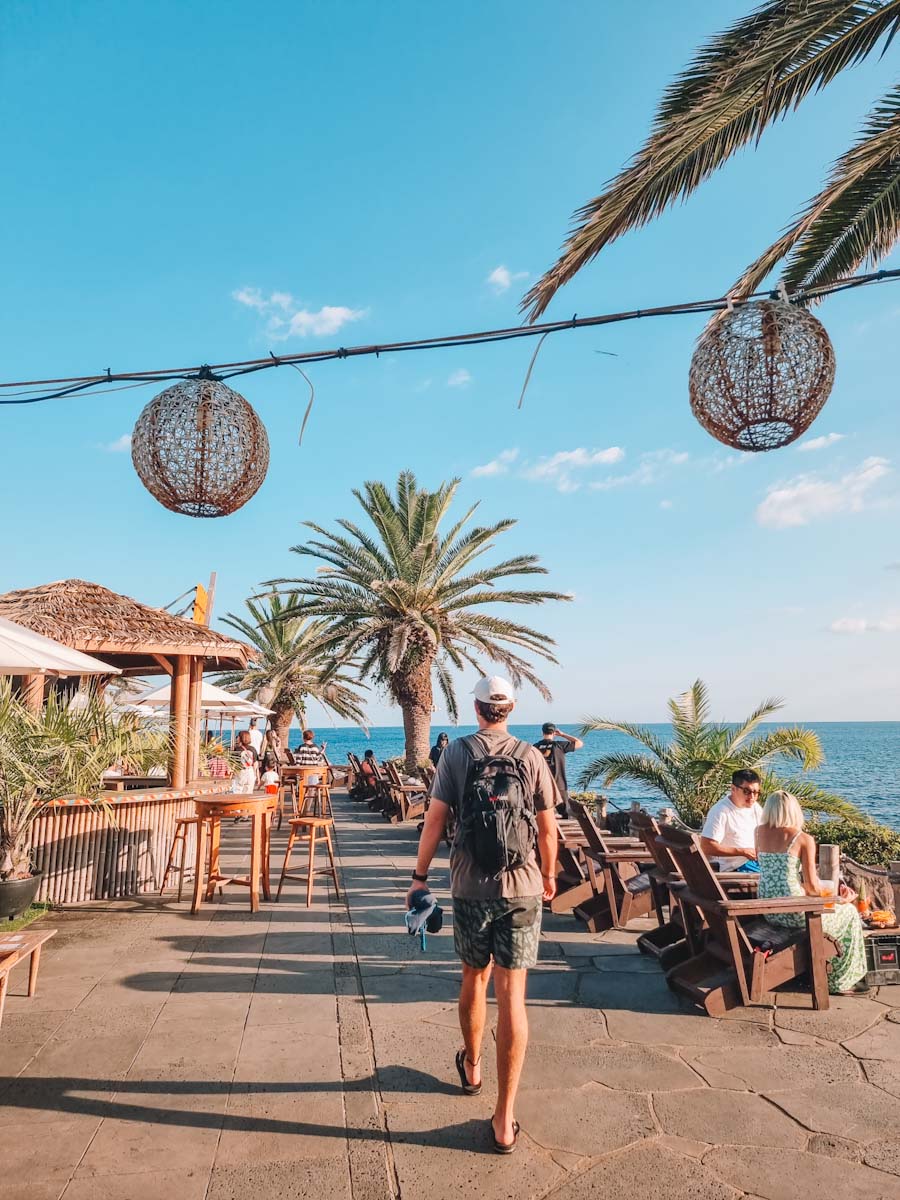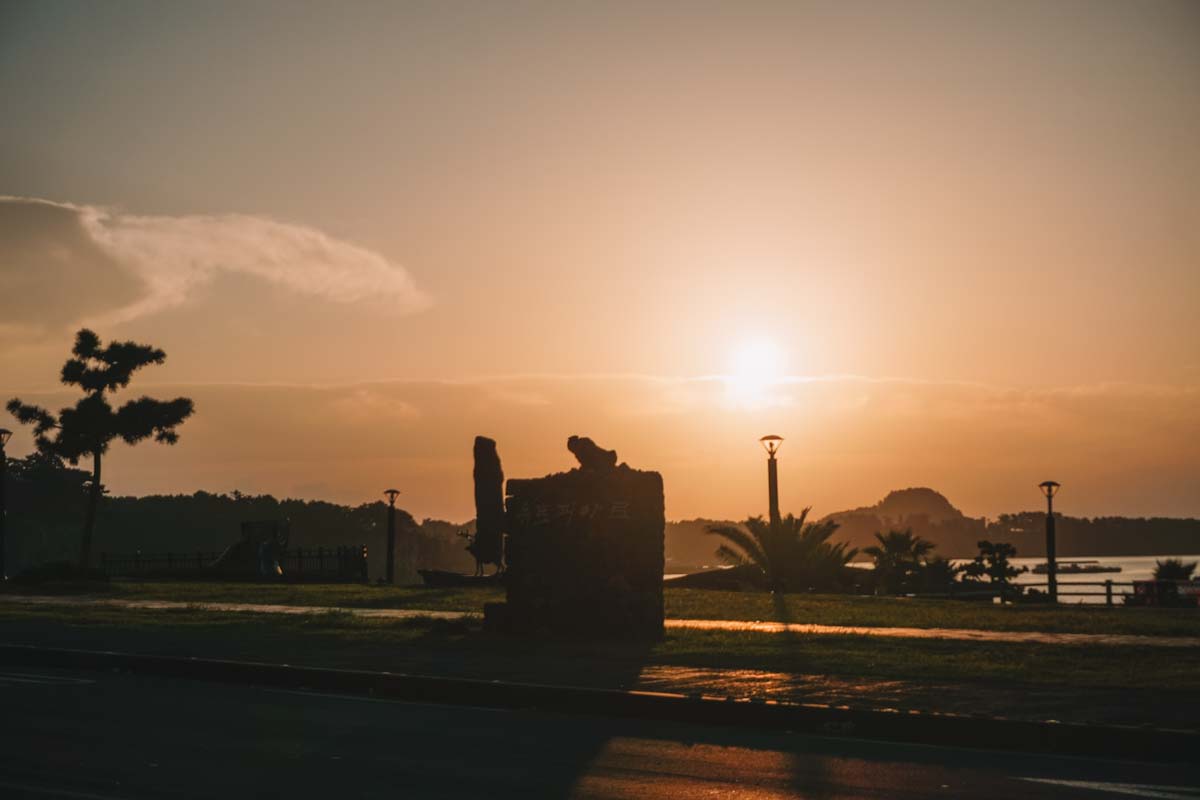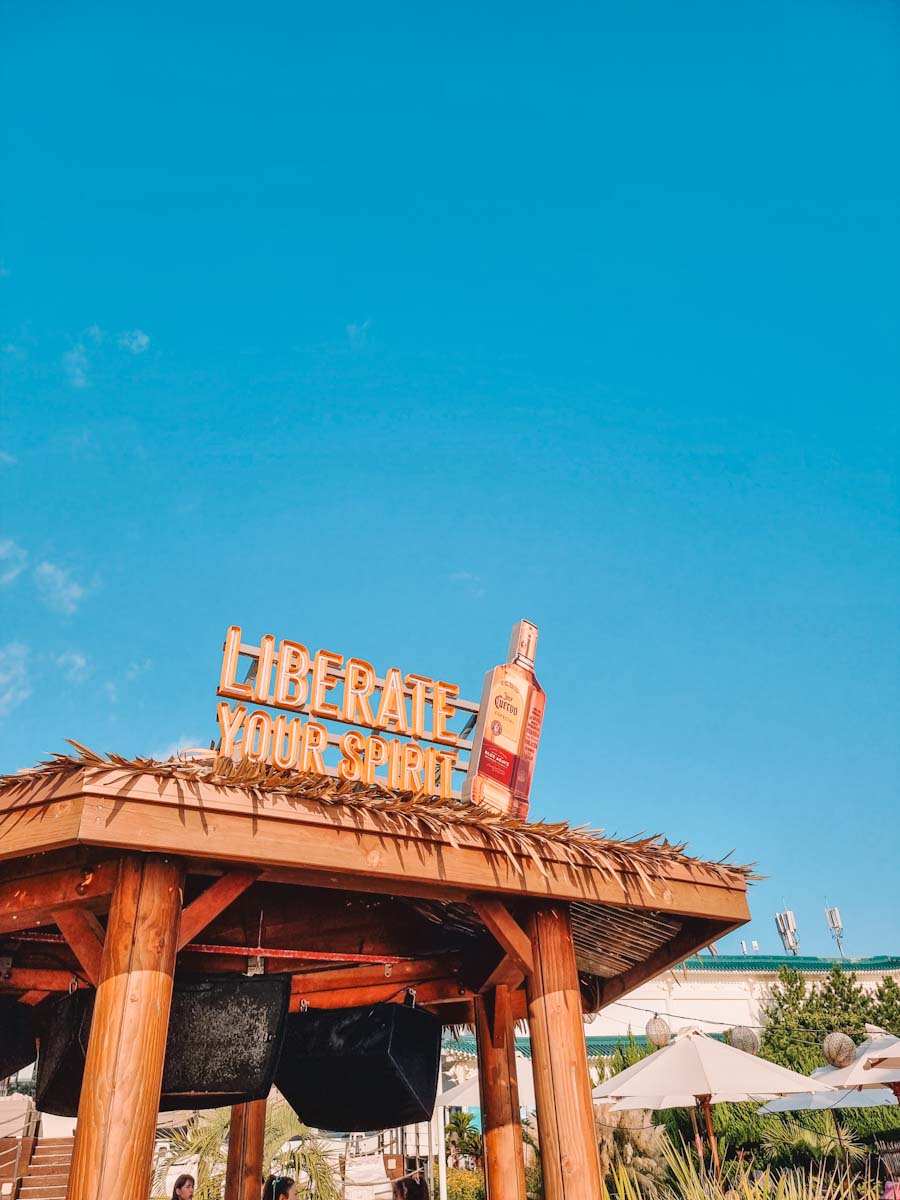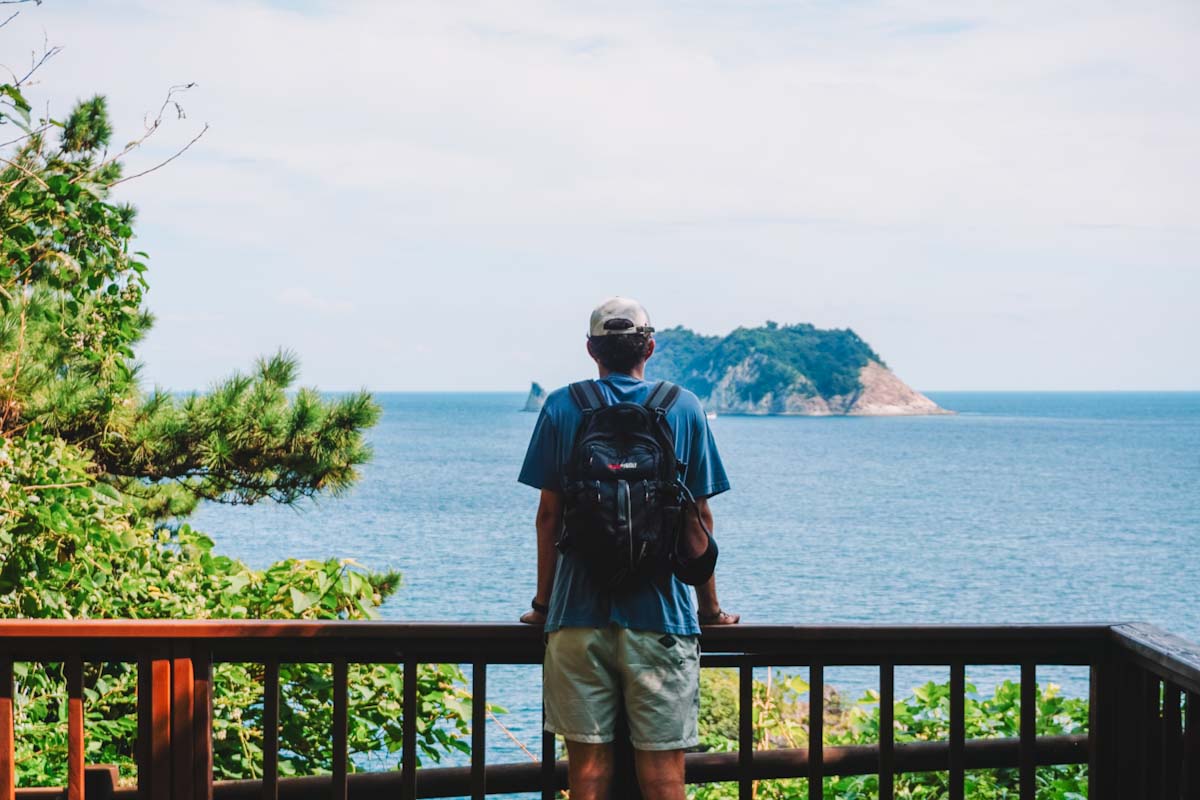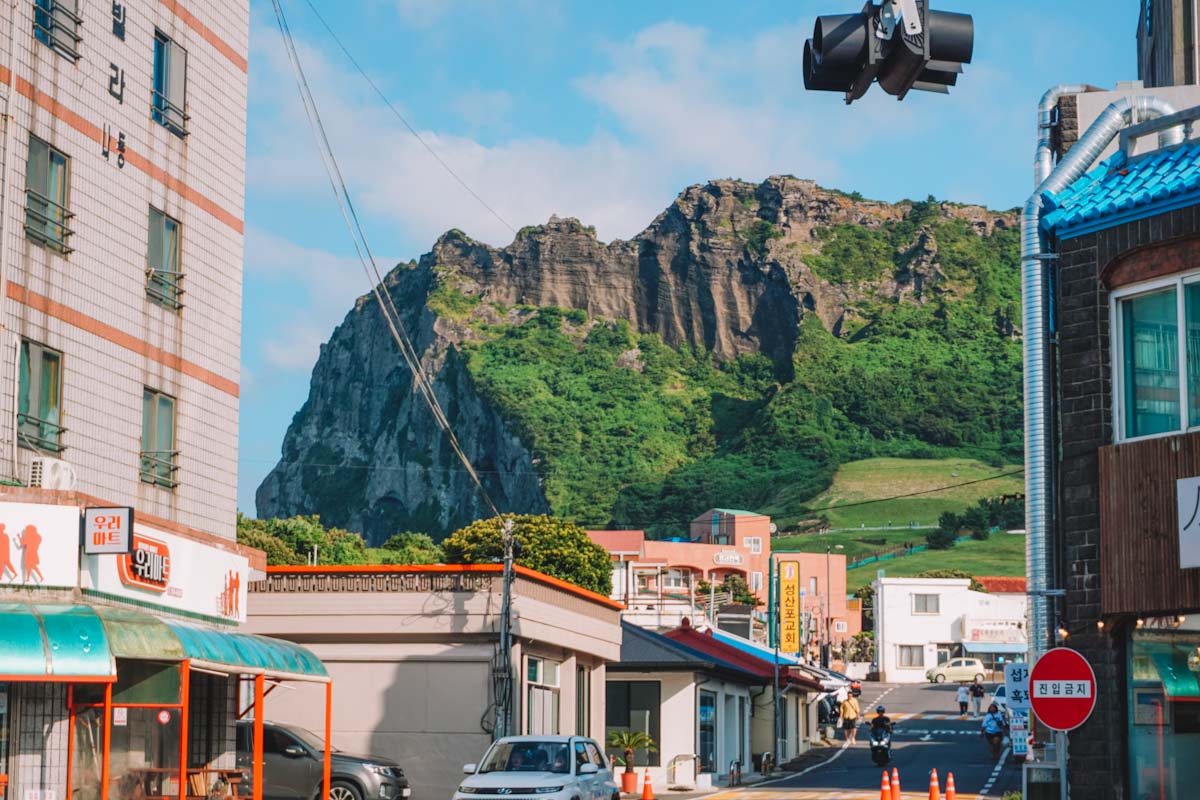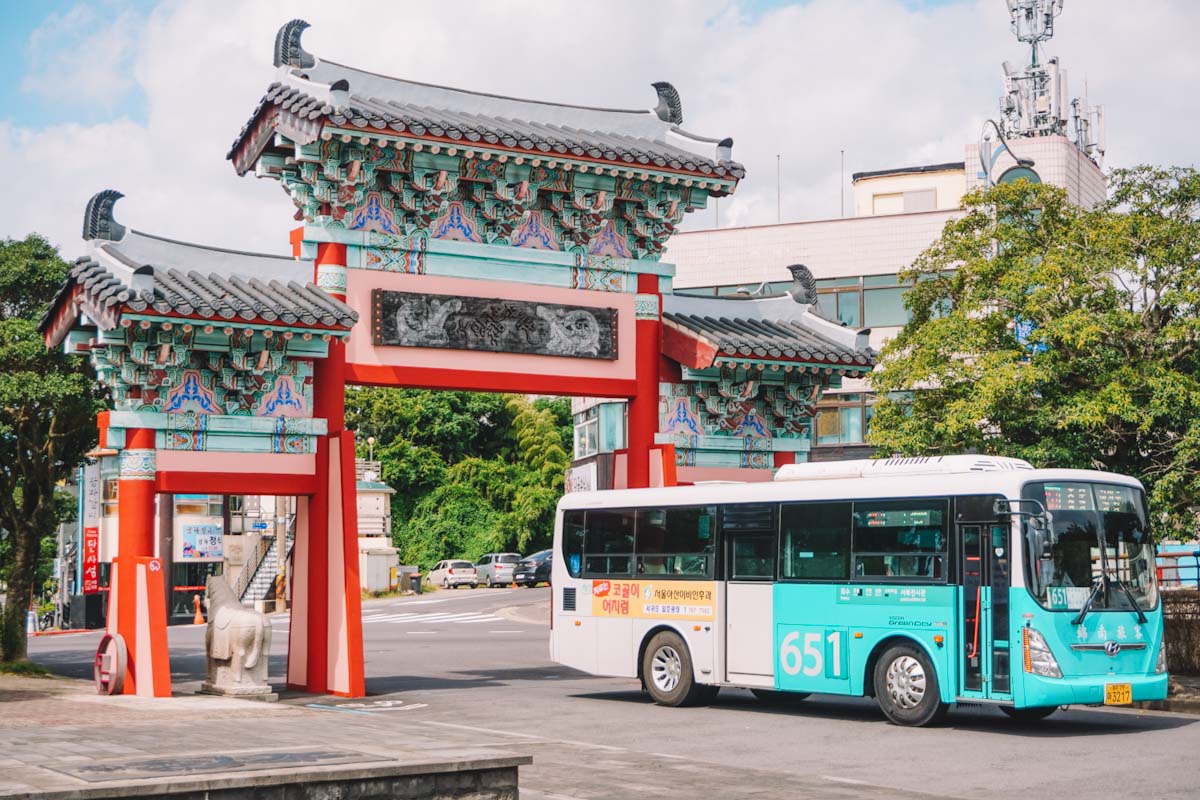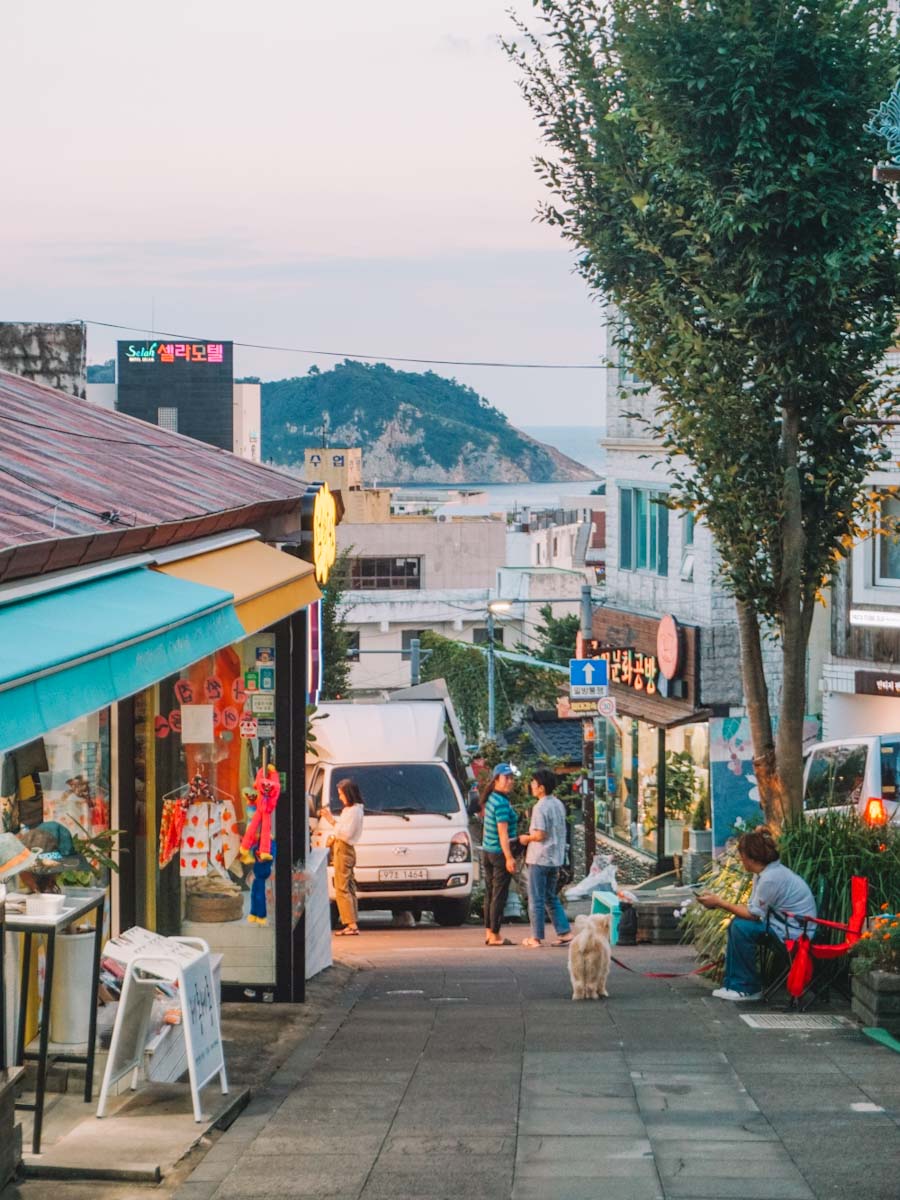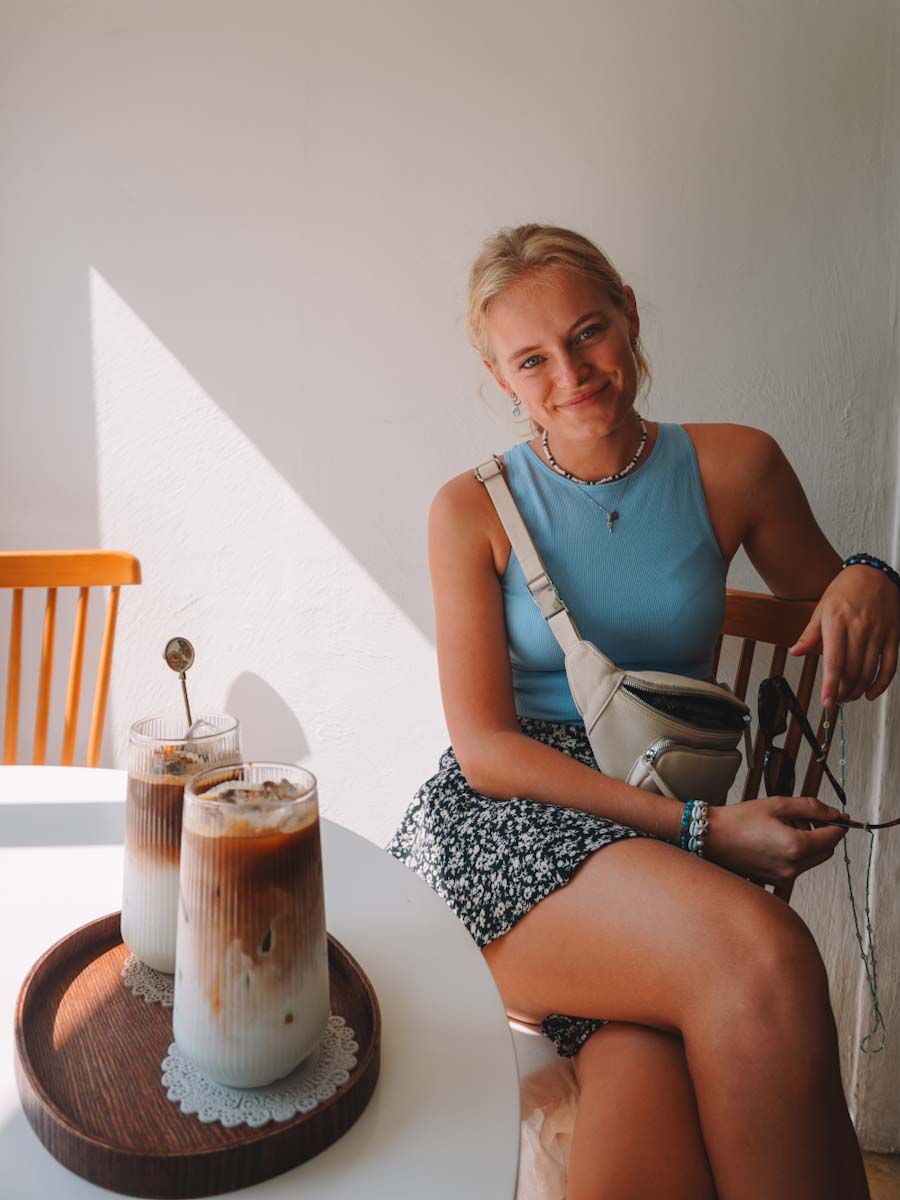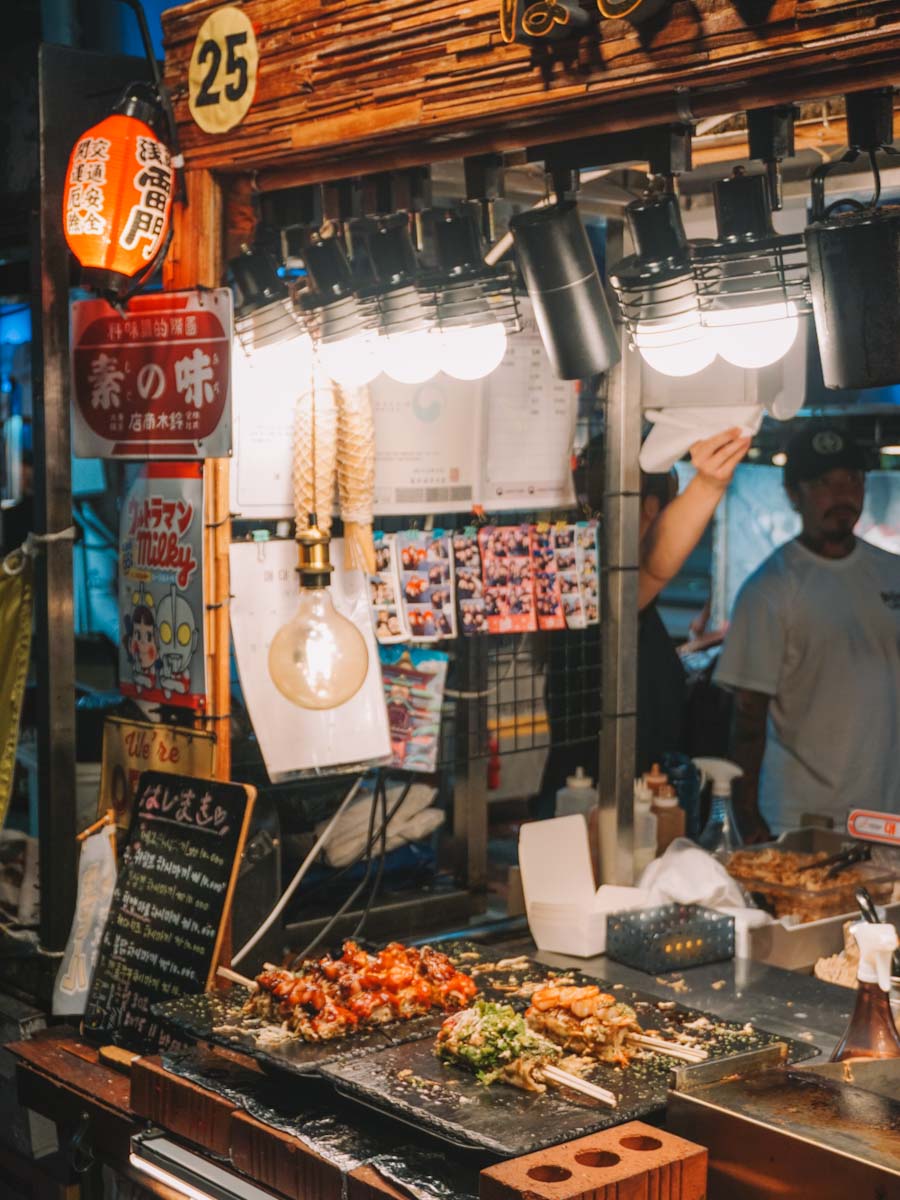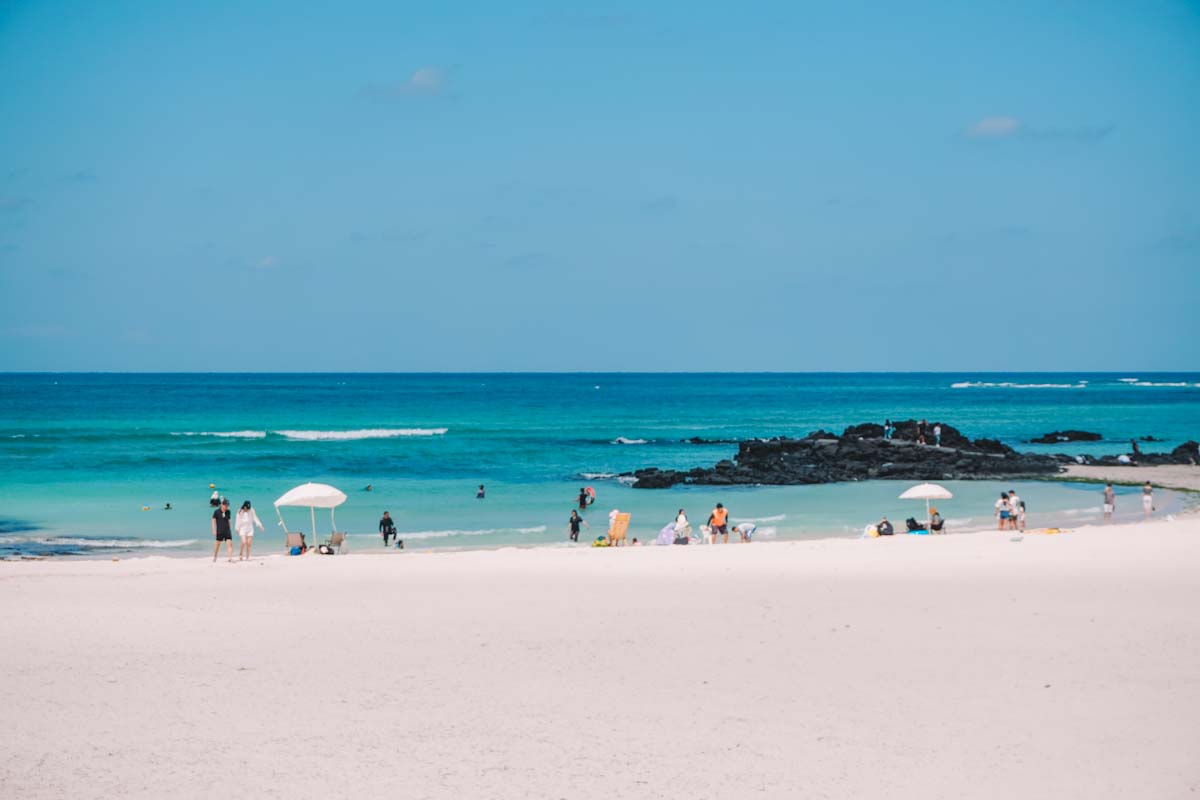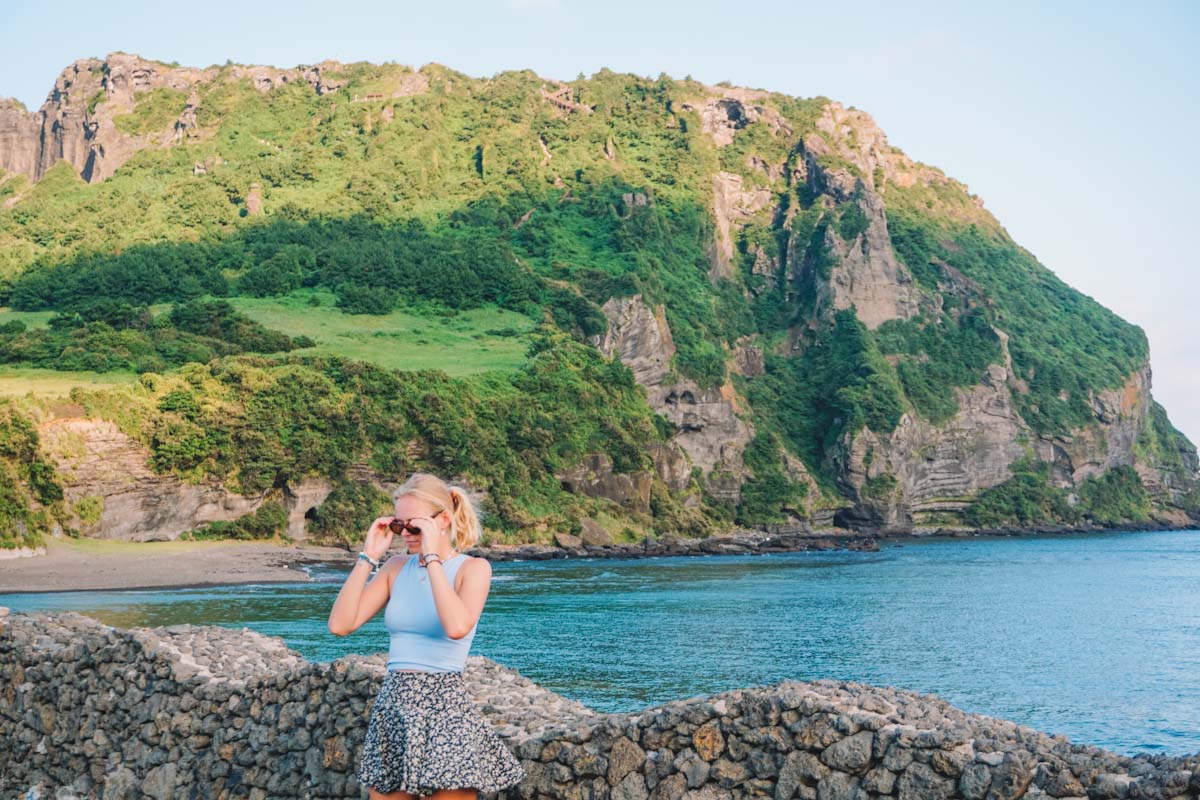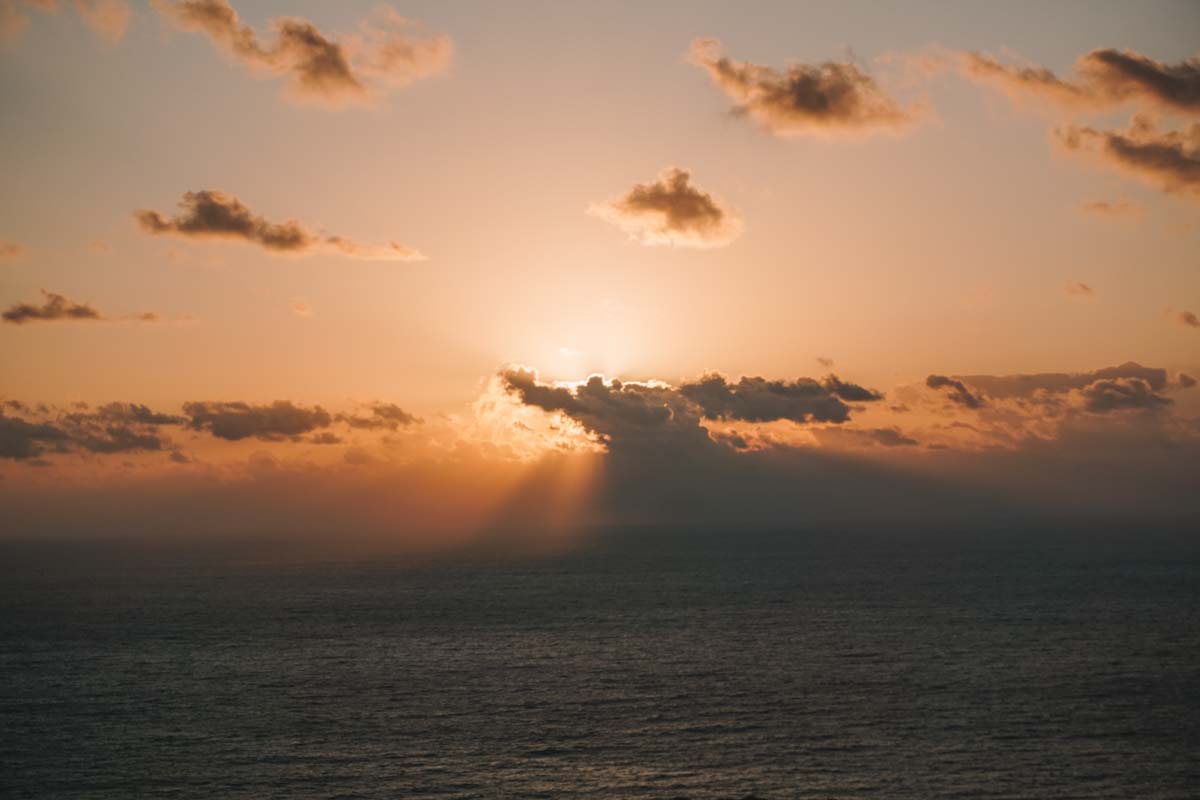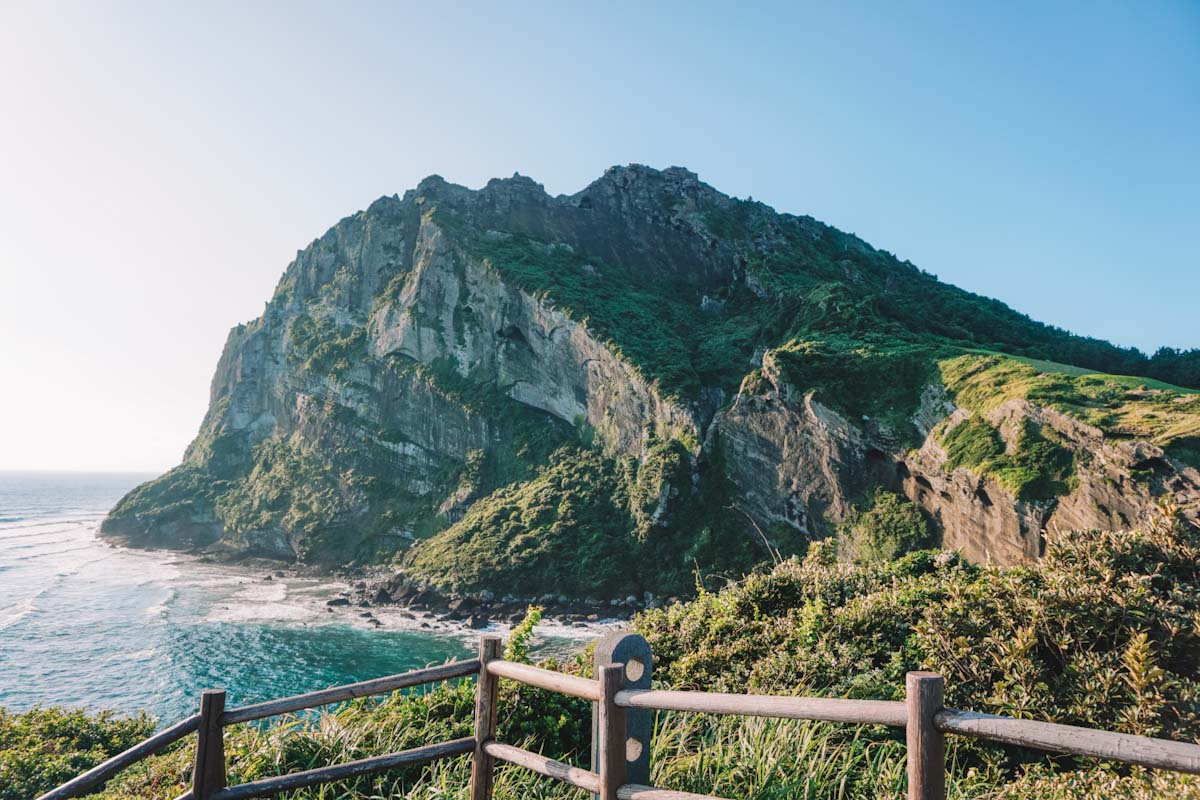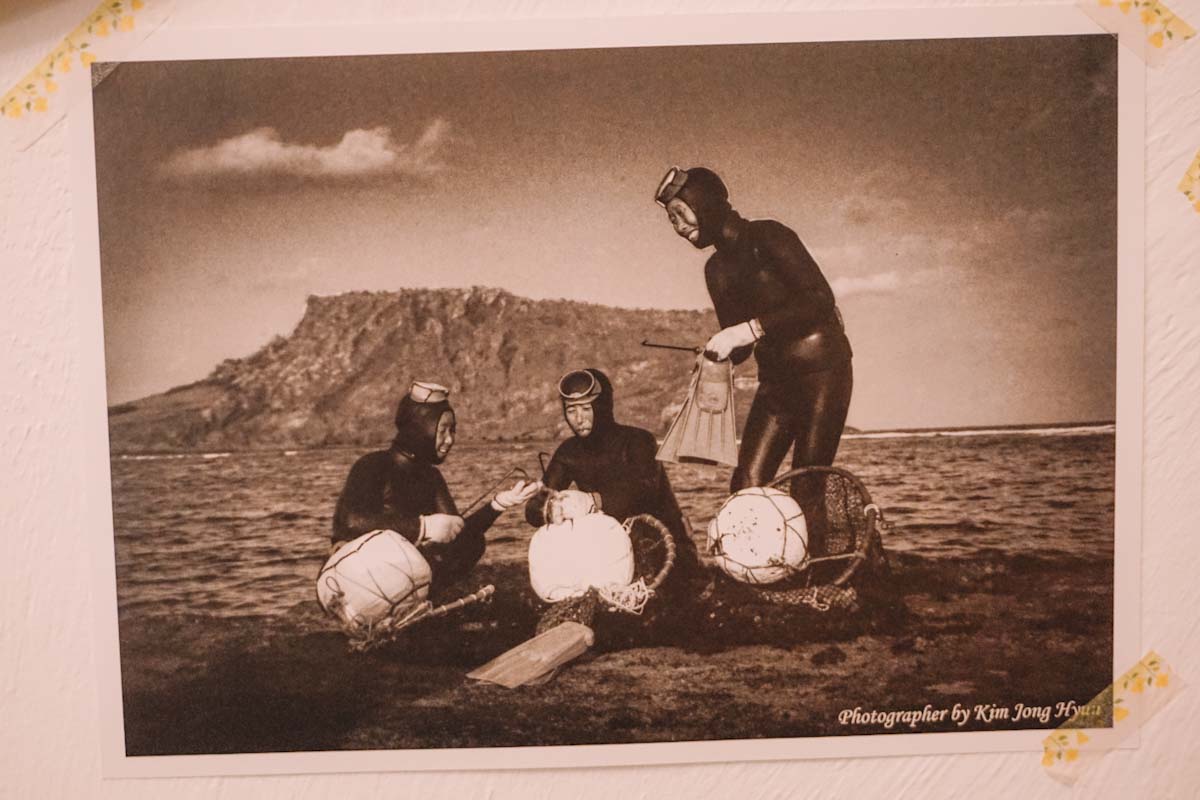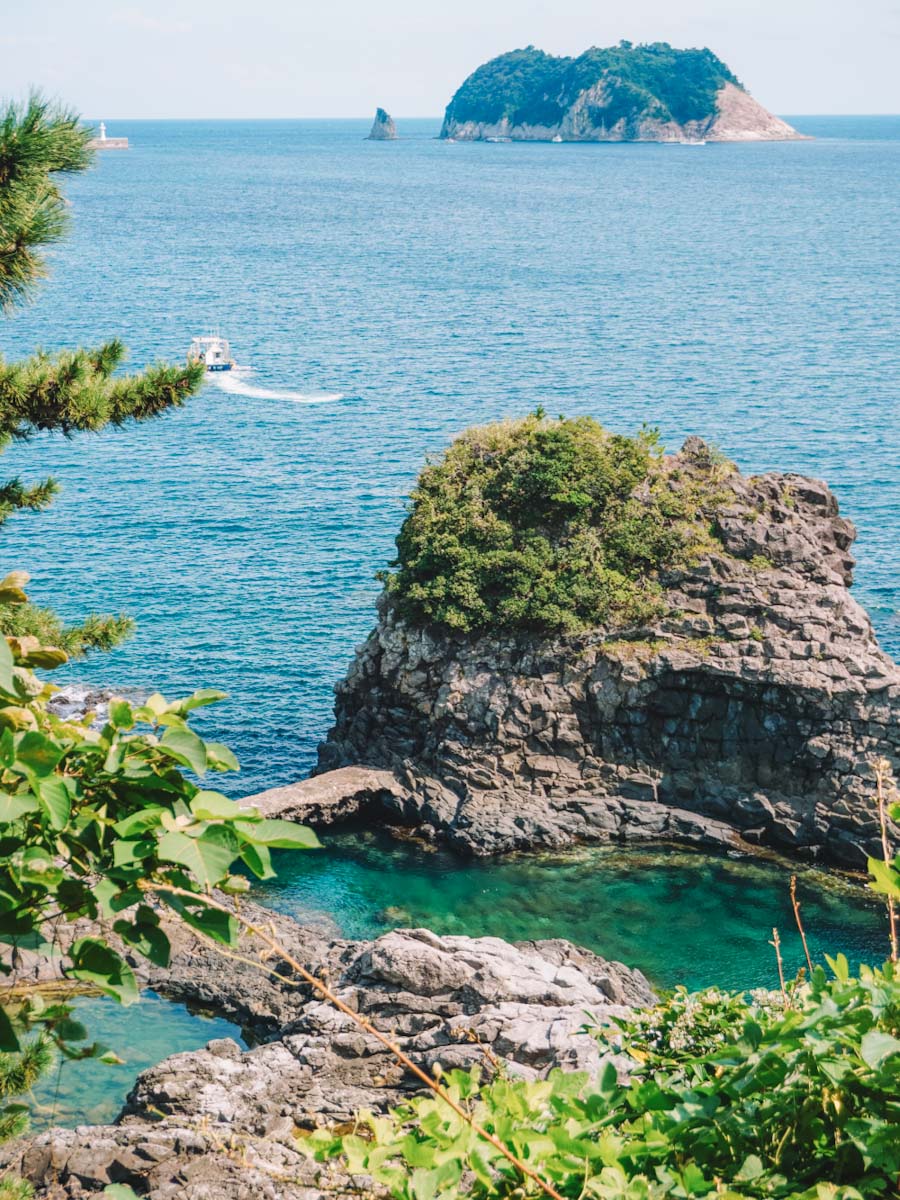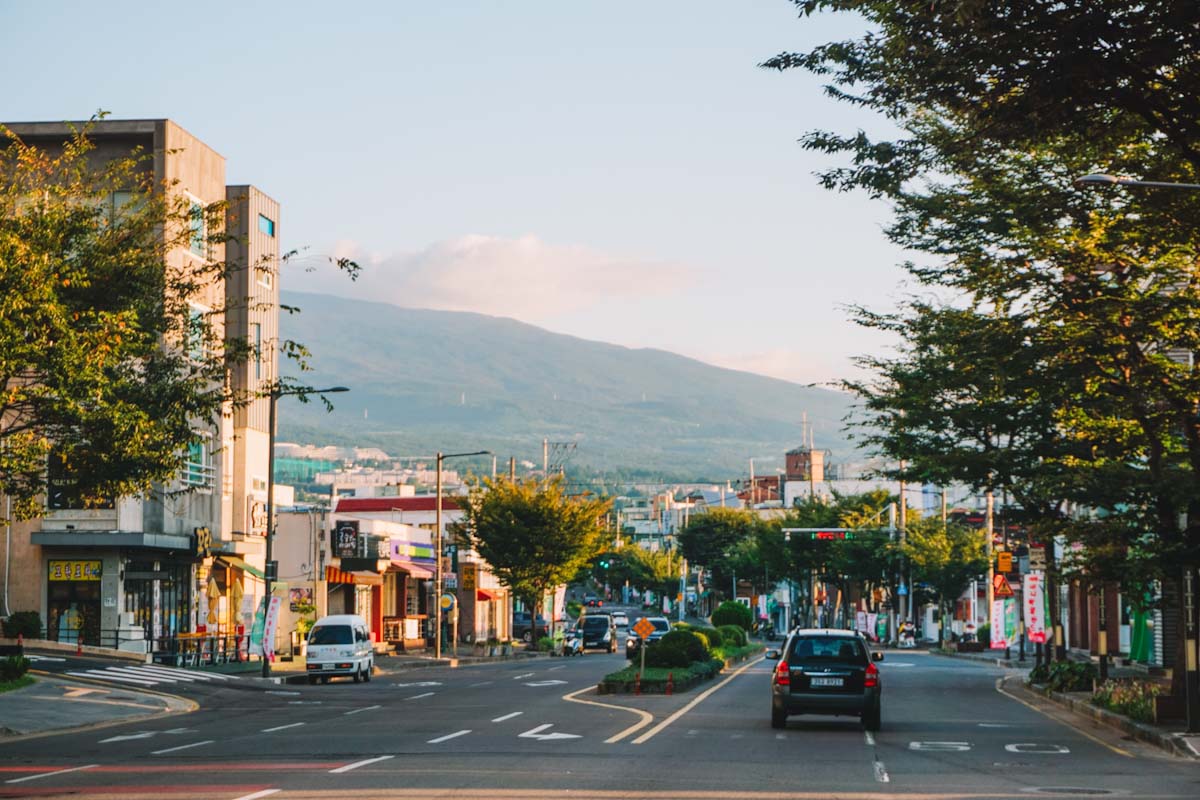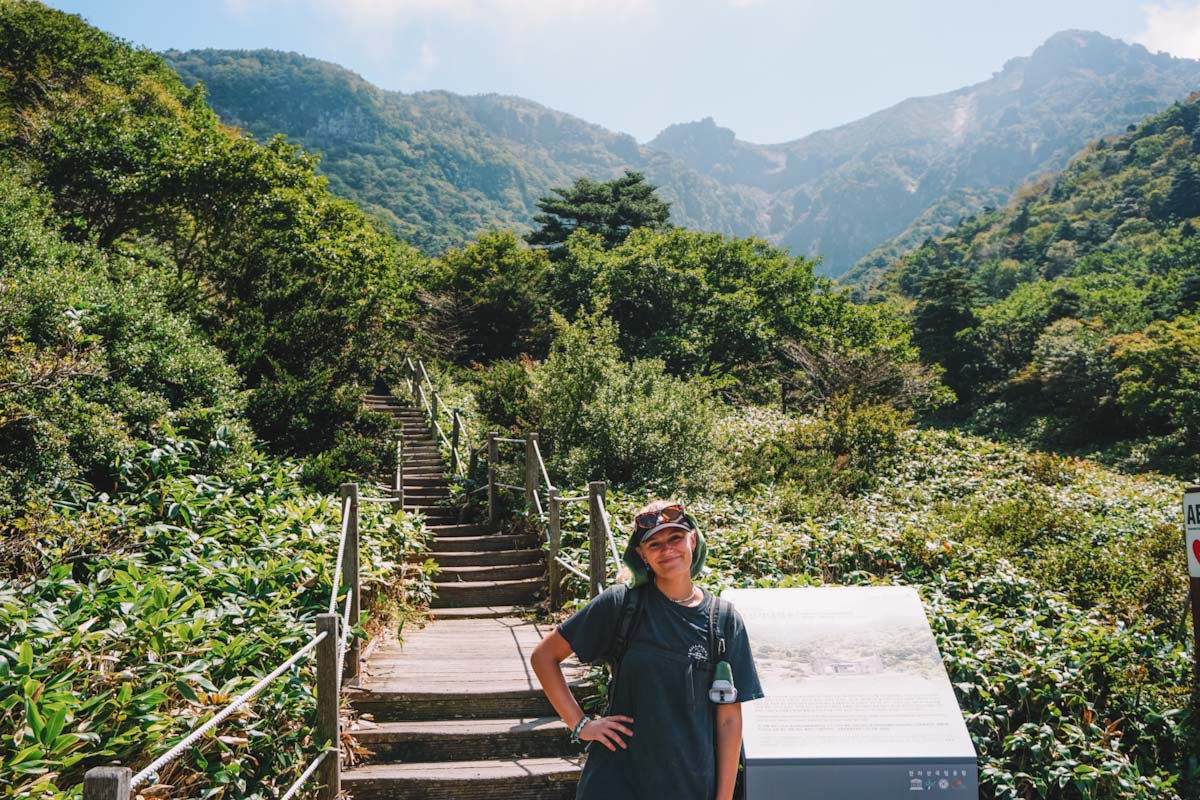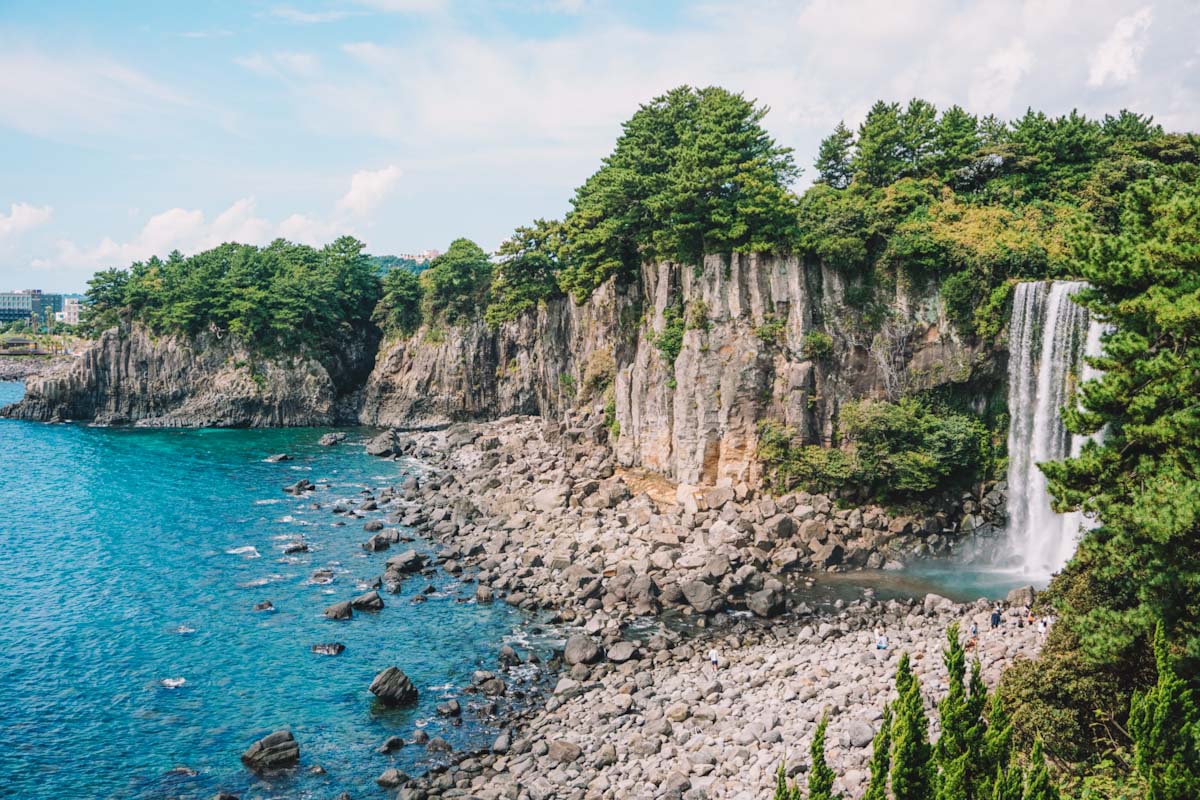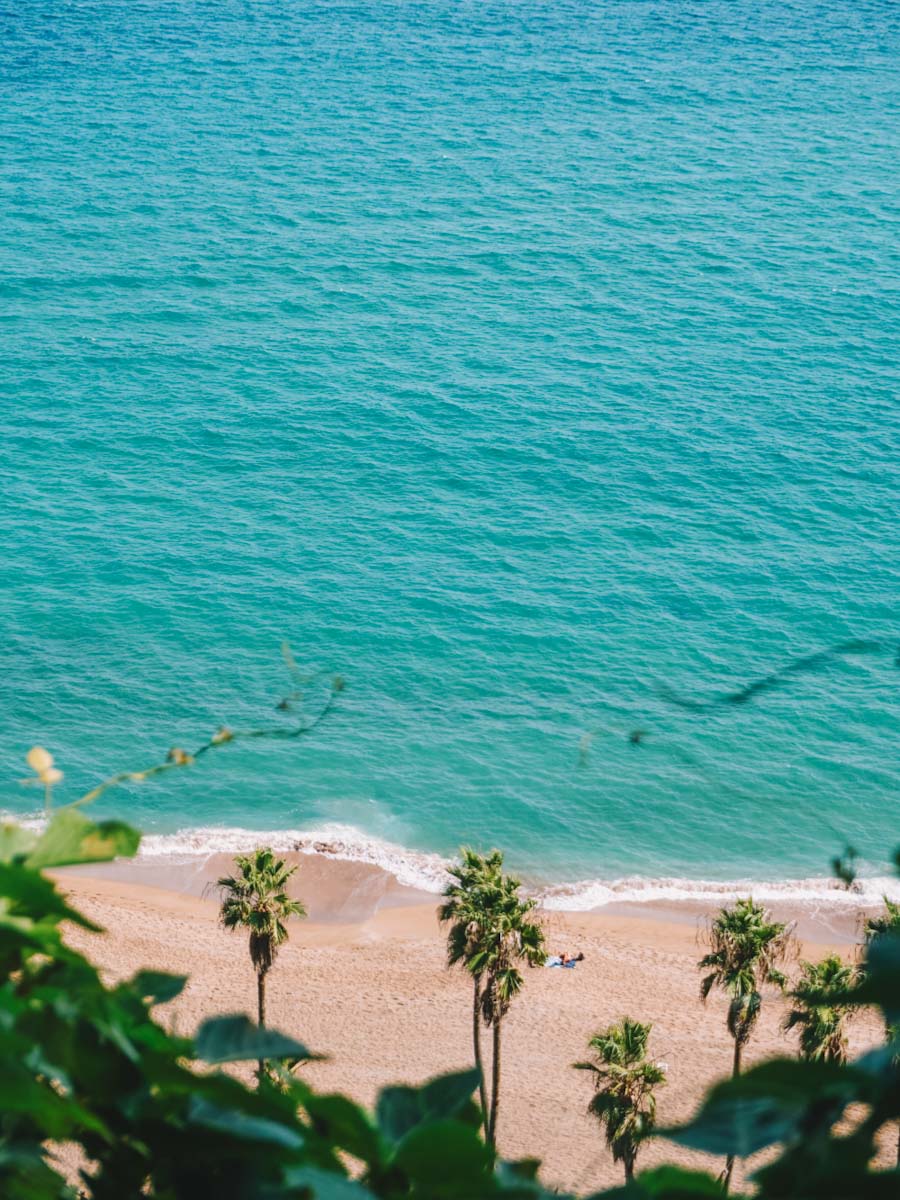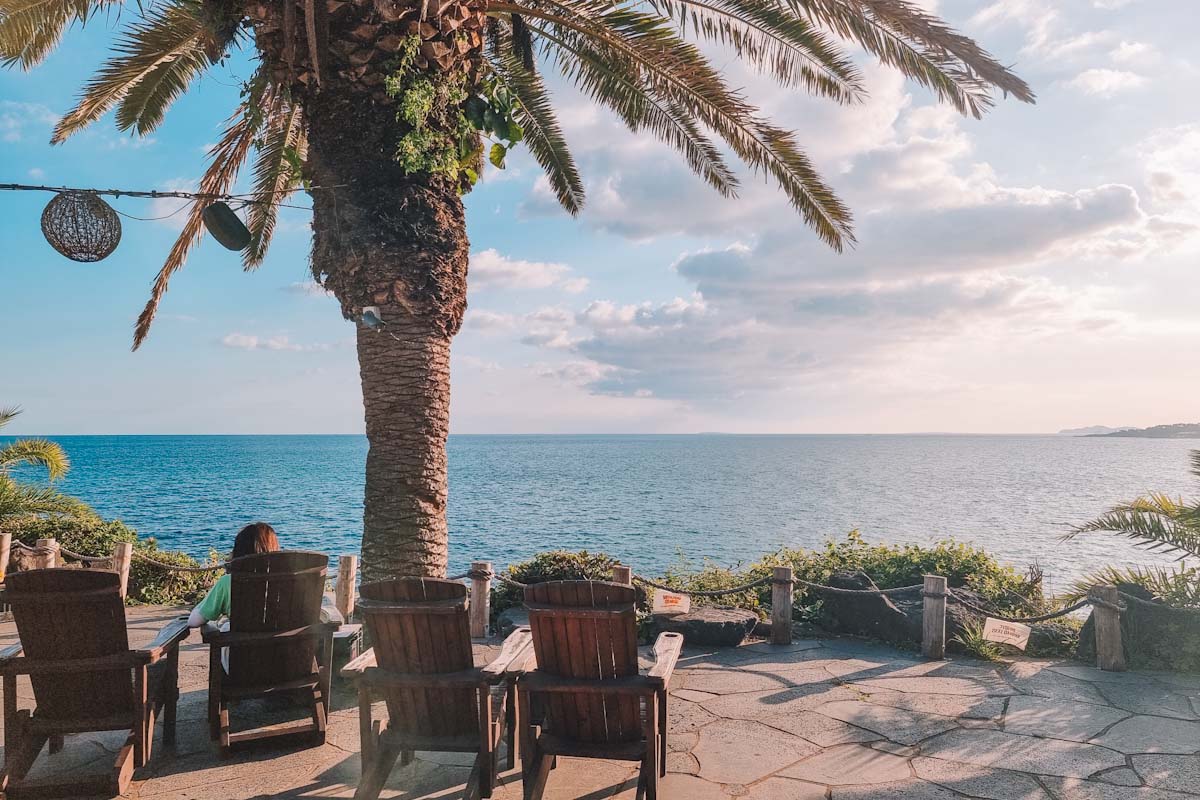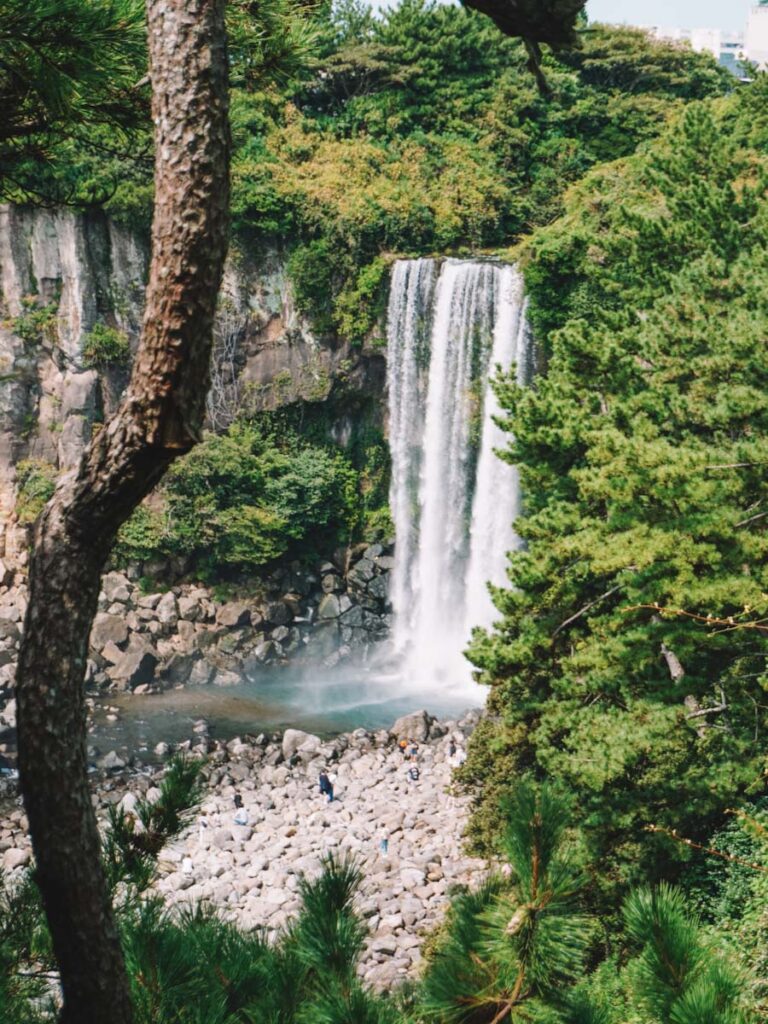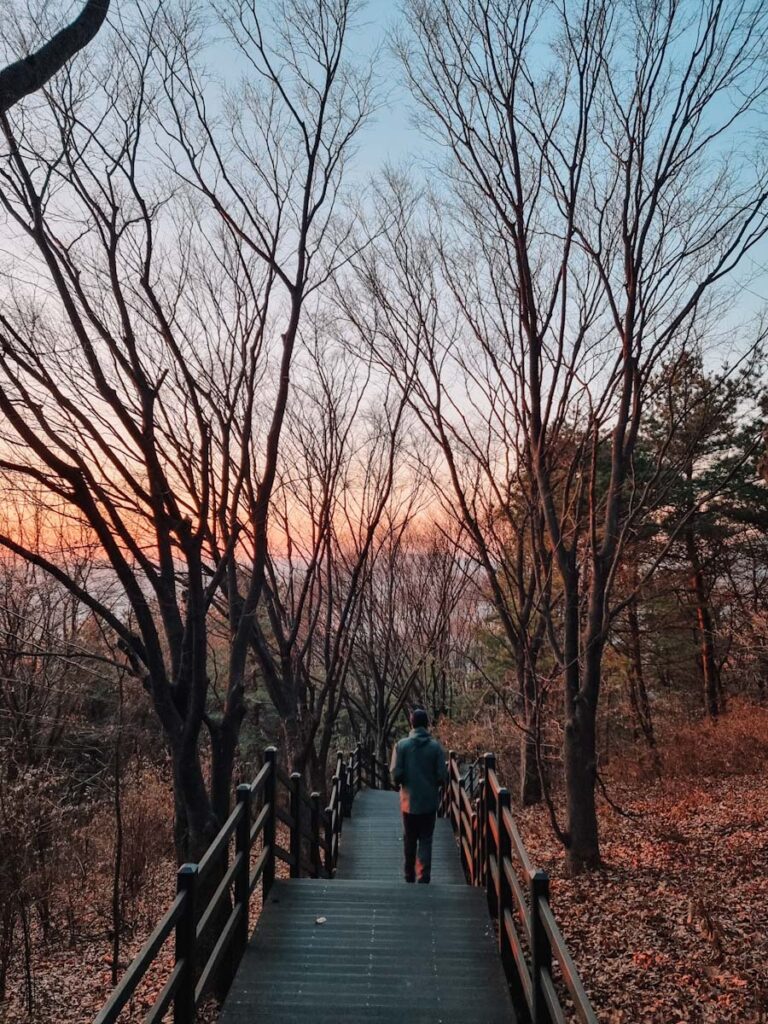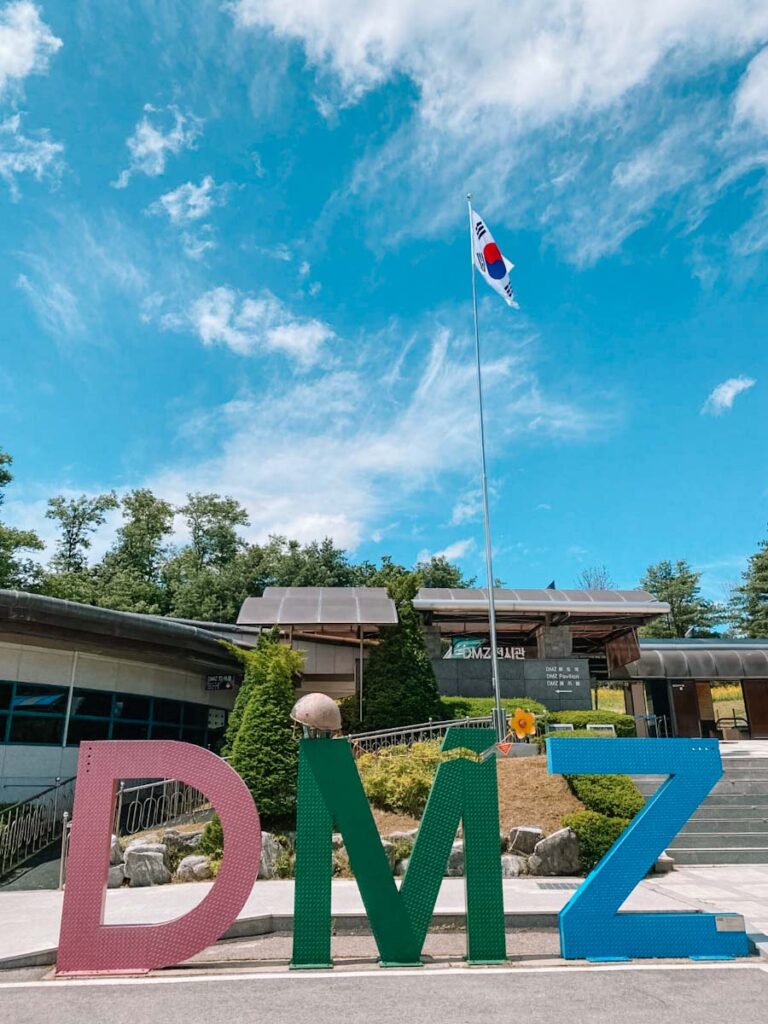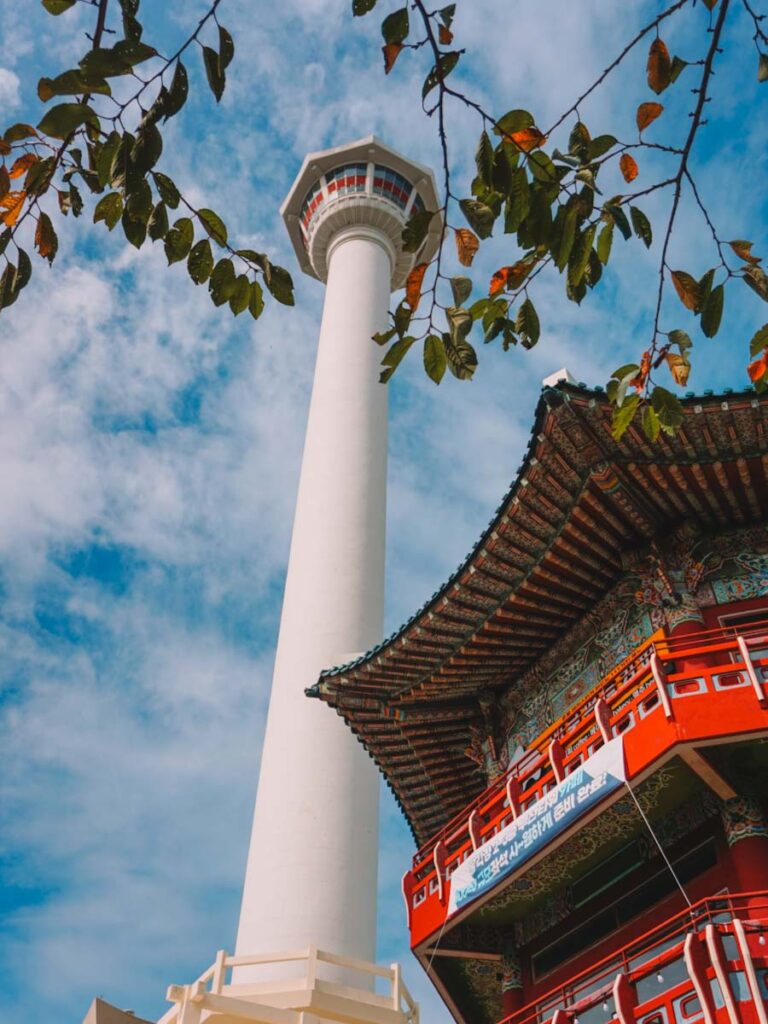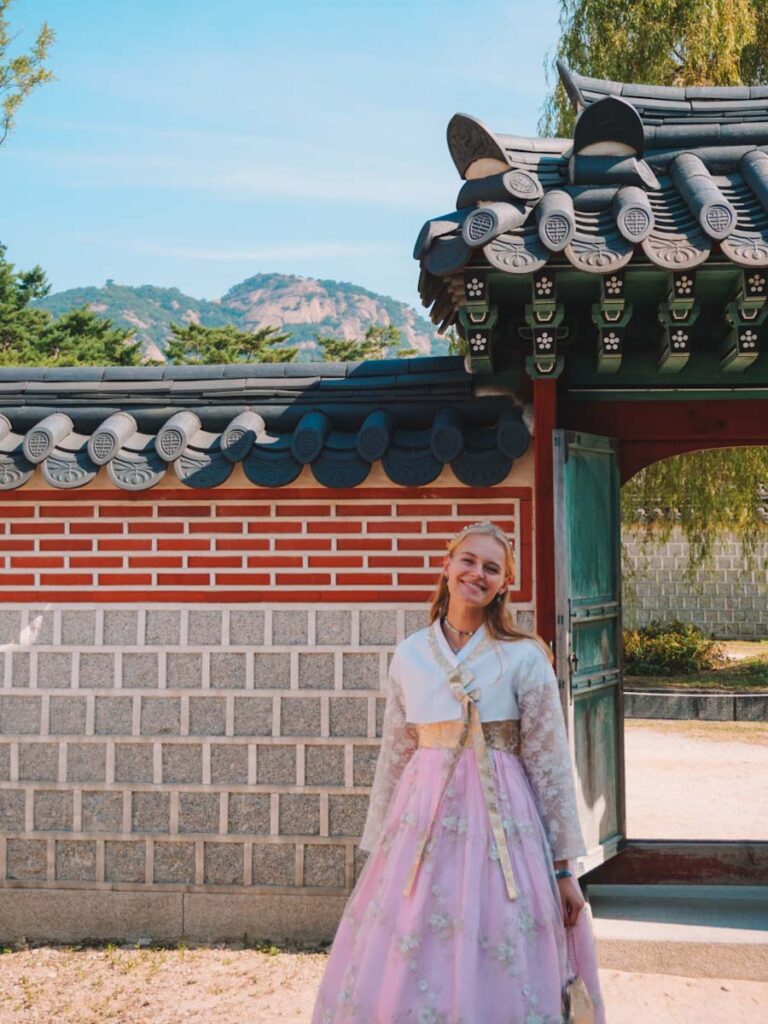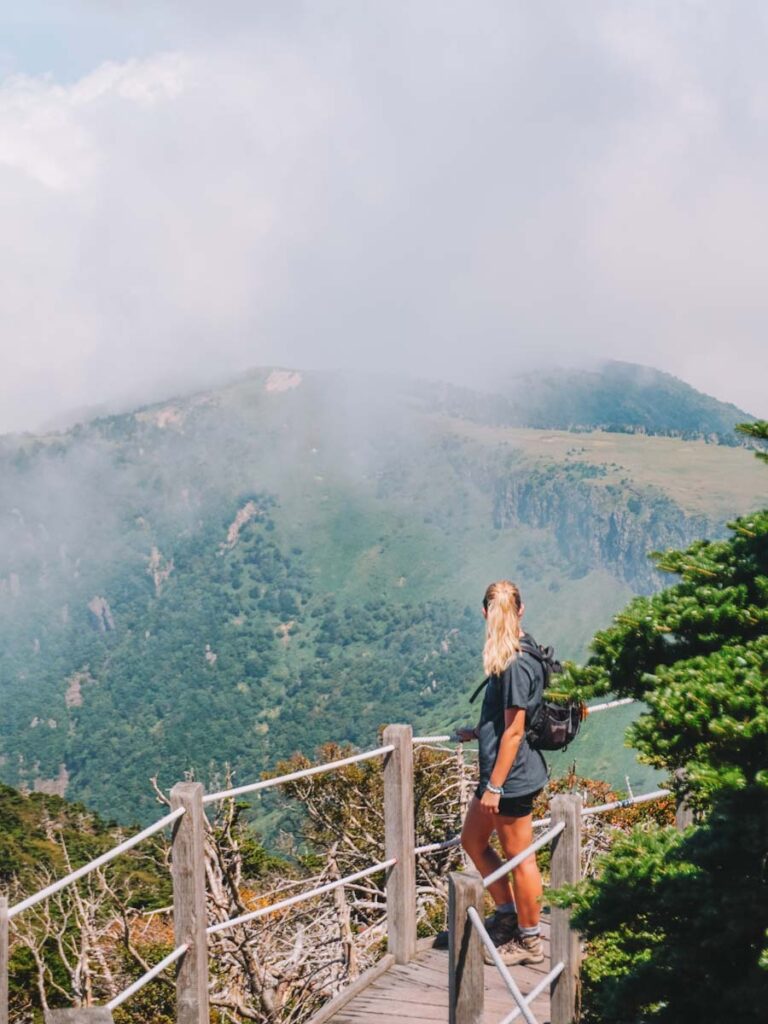Getting to Jeju island
Jeju has an international airport, which is located in the north of the island in Jeju City. But flying from within Korea, especially from Seoul or Busan, is by far the best and cheapest option. Alternatively, there is a ferry that runs between Jeju and Busan, but it’s very long.

Fun Fact: It blew our mind to find out that the connection between Seoul and Jeju island is the busiest air route in the world.
Is Jeju island Worth Visiting?
Yes, Jeju Island is absolutely worth a visit. It is a great getaway destination that has things to do all year round. Flights to and from Jeju Island to the mainland are very affordable, and so is exploring the island. We were only on Jeju for a short time but we would definitely go again as there is so much more to see and do.
Best Time to Visit
Spring and Autumn months are known to be the best time to visit Jeju island. Winter can get pretty chilly and on the other hand, summer can get extremely hot and busy with local tourists. In Spring and Fall, prices are affordable, weather is mild, and the landscape is in bloom. Perfect for exploring, hiking, and enjoying the outdoors.
How Many Days to Spend on Jeju island
This all depends on how much time you have and what you prefer to do. You can spend as little as 2-3 days on the island, seeing mainly the highlights near the north, where the airport is. However, most travellers spend a little longer. We think 4-5 days is ideal so you can cover more of the island without rushing.
Getting Around With or Without a Car
Most of Jeju’s highlights are spread all over the island, so many travellers hire a car during their stay on Jeju. In other Jeju itinerary blogs you’ll read that having a car is highly recommended as taking public transport is not reliable. We found that this is not true.
Yes having your own car is ideal, but not necessary at all to explore the island. To rent a car you need an international driving license and renting a car can get pretty expensive for solo or couple travellers.
We visited Jeju in September 2023 and travelled around only by public transport and walking. It was very doable and we were pleasantly surprised at how convenient the bus system is.
Public Transport on Jeju
Jeju doesn’t have a complex subway system like Seoul and Busan, but there are quite a few busses going around that are reliable and cheap. Most bus fares will only be around ₩1,250 each way. There are some Express busses, like the Airport Limosine, which is slightly more expensive. Your favourite bus lines on Jeju will be:
- Bus 201 which takes you from Jeju City (north) in a ring around the east coast to Seogwipo (south)
- Bus 202 which goes from the north to the south along the west coast
- Bus 182 goes is a similar but smaller loop, from Jeju City around the west-side of mount Hallasan to Seogwipo and back to Jeju City around the east-side of the mountain
Tips for Taking the Bus
Just like on the mainland, you will need a T-money card to pay your bus fares. These can be bought for around ₩3000 and topped up in most subway stations in Seoul or even convenience stores.
We’d recommend to not use google maps, but instead us Kakao Maps to check for directions, bus times, and prices.
Where to Stay
During our Jeju island itinerary, we stayed in 3 parts of the island: Jeju City (the north), Seongsan Ilchulbong (east), and Seogwipo (south). We decided to skip the west-side of the island because there weren’t as many things we wanted to see there. We would recommend staying in these 3 areas as it will enable you see (in our opinion) some of the best attractions on Jeju.
Wanting to book?
Follow the links below for all your accommodation, transport, & activity needs!
Jeju island Itinerary
Jeju island has a lot of things to offer that you can include in your itinerary. From hiking and swimming, to shopping and eating out, there is something for everyone. We will discuss our favourite things to do and give you our 5 day itinerary on Jeju.
Day 1
Arrive in Jeju city and drop your bags at your first hotel in the afternoon. Grab some lunch and explore the streets of Jeju city. Yongyeon Pond is a nice little area to sit and have a coffee along the coast. Another popular area is around the Dongmun traditional market.
Dongmun Traditional Market
Check out the market at night. It is open all day and is meant to close at 11pm, but when we went everything was already closed at 10pm, so get there before then! Grab some local snacks and dinner. Try the Jeju “Black pork”, its a popular local meal and is delicious.
Day 2
Since there are some nice things to see along the north-east coast of the island, try to leave Jeju city after breakfast. Take bus 201 along the coast to the town of Seongsan, this would take only about 1 hour 20 minutes directly, so there is time to see some things along the way.
Manjanggul Cave
About an hour away from Jeju city, you’ll find a massive lava tube system, formed by the eruption of a volcano. Get off bus 201 right next to Gimnyeong Seonsegi Beach to take bus 711-1 or 711-2 to the entrance.
The cave has a ₩4,000 fee and the visit will take around 45 minutes to 1 hour. Bring a jacket, because the temperature inside is quite chilly and there is water dropping down. After the visit, get back on bus line 201 in the direction of Seongsan.
North beaches
Along the north coast, you’ll find multiple nice beaches to check out. Our favourite was Woljeongri Beach for the lively atmosphere and many restaurants in the area. You can swim if you want (and if the weather allows), but this is also a great spot to have some lunch.
Seongsan
You’ll arrive in Seongsan, the town located at the bottom of Seongsan Ilchulbong, in the afternoon. Go see the sunset down near the water at Sumapo Coast and have some dinner afterwards. Go to bed early, because next day you’ll wake up before sunrise.
Day 3
Sunrise hike Seongsan Ilchulbong
Probably the most popular activity while on Jeju. Seonsan Ilchulbong is a volcanic cone that was formed thousands of years ago. When you visit during opening hours it costs 5,000 won, but since we arrived before the ticket counter opened it was free!
The view from the top is amazing, but it gets very busy. There is a large platform that quickly fills up right before sunrise. The walk up takes about 20 minutes and is quite easy as there is stairs the whole way.
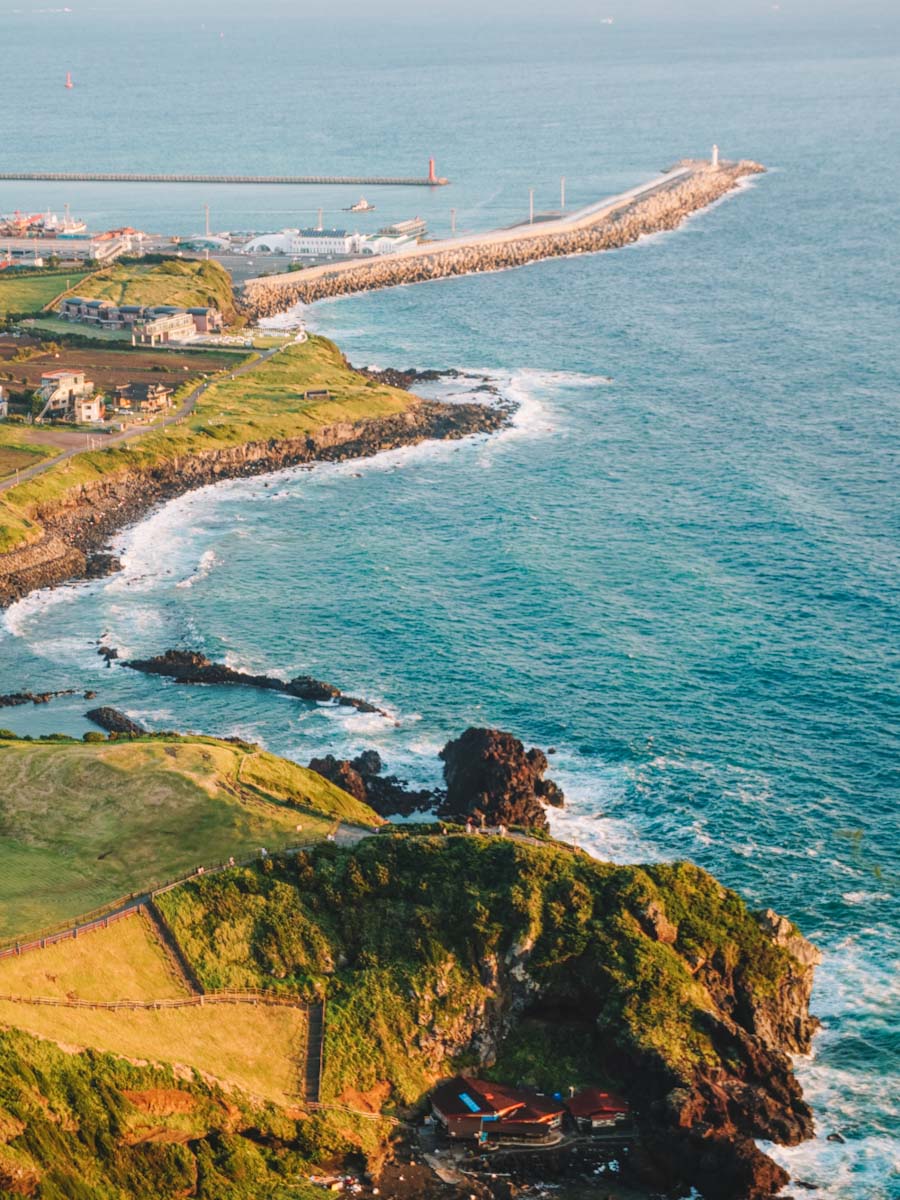
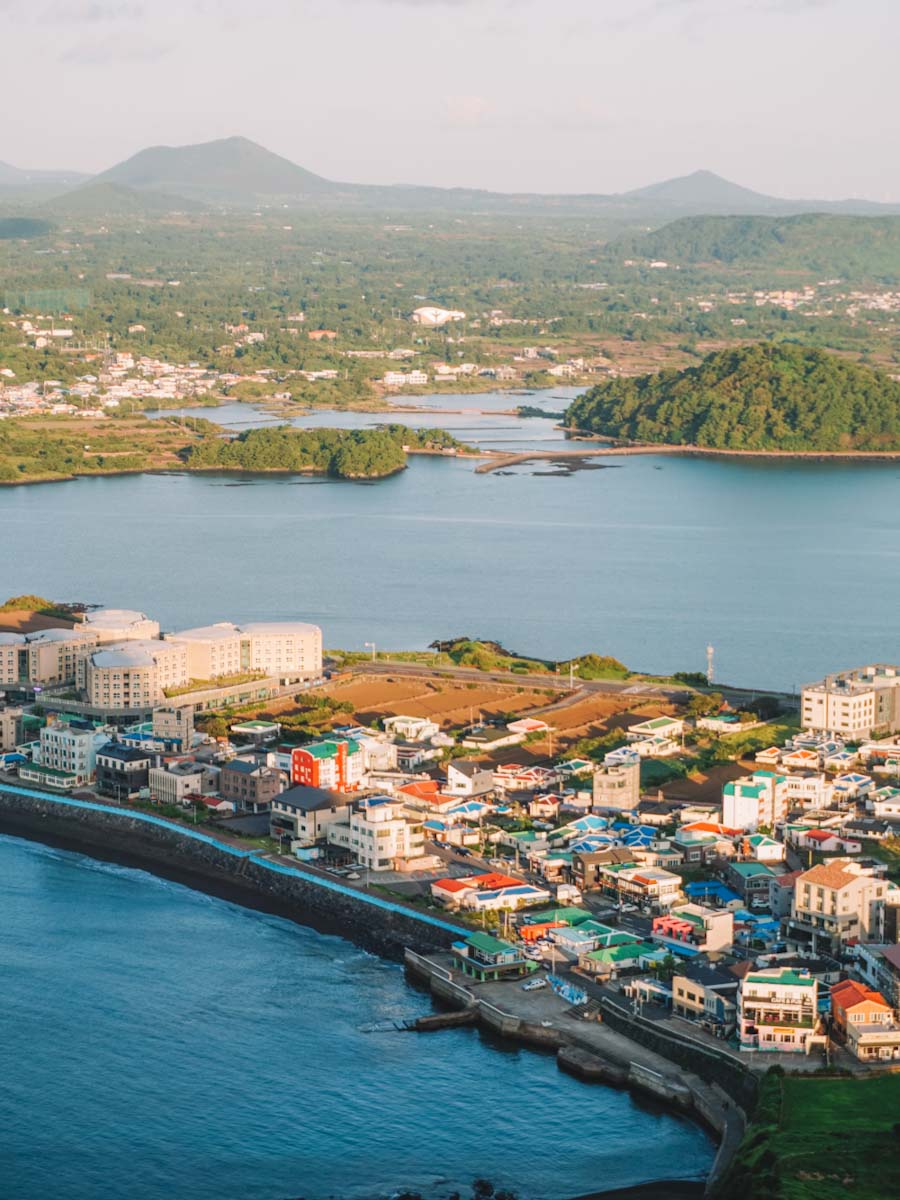
When going down, be sure to take the path along the coast. It is not much longer than the normal way down and has nicer views.
Female Divers
Everyday at 1:30pm there is a demonstration by the haenyeo, “the female divers”. These women, some 80+ years old, dive down to depths of up to 10 meters without any air tanks to collect shell fish.
This practice has been going on for centuries and plays an important role in supplying the community with seafood. The demonstration takes place right at the base of Seongsan Ilchulbong.
Seogwipo
The next area to visit is Seogwipo. From Seongsan-ri, jump back on the 201 bus and head west. The trip will take around 1.5 hours.
Hwanguji Coast
The south coast of Jeju is stunning. For an afternoon/evening walk we recommend heading to the Hwanguji Coast. Here they have a walking trail which takes you past the Oedolgae rock formations and the natural pools. You can (normally) even walk down and swim at the natural pools in the emerald water.

Update: As of September 2023 the natural pools have been closed for swimming due to a landslide
To finish it off, follow the road around toward Saeseom island for sunset. From here you’ll have an awesome view of Seogwipo and Mount Hallasan, South Korea’s highest point!
Day 4
Today will be an active day, as you’ll hike to South Korea’s highest peak. A great full day activity to do while on Jeju. Make sure that you have bought some lunch, snacks, and enough water for today as there are no places to buy anything while hiking.
Mount Hallasan Hike
Wake up early and catch bus 281 from Seogwipo to the eastside of the mountain. We wrote a whole post on climbing mount Hallasan, which you can find here. Important to know that you need to make a reservation online. Hiking mount Hallasan will take between 6-8 hours and will be a pretty tough activity for the legs.
Seogwipo Night Market
This market is open every day between 7am and 9pm. You can find souvenirs, fruits and veggies, juices, and local snacks here. If you still have a little bit of energy left after the hike, then visit the Olle market in the afternoon to score a bag of mandarins and try some local snacks, like a black pork bread bun.
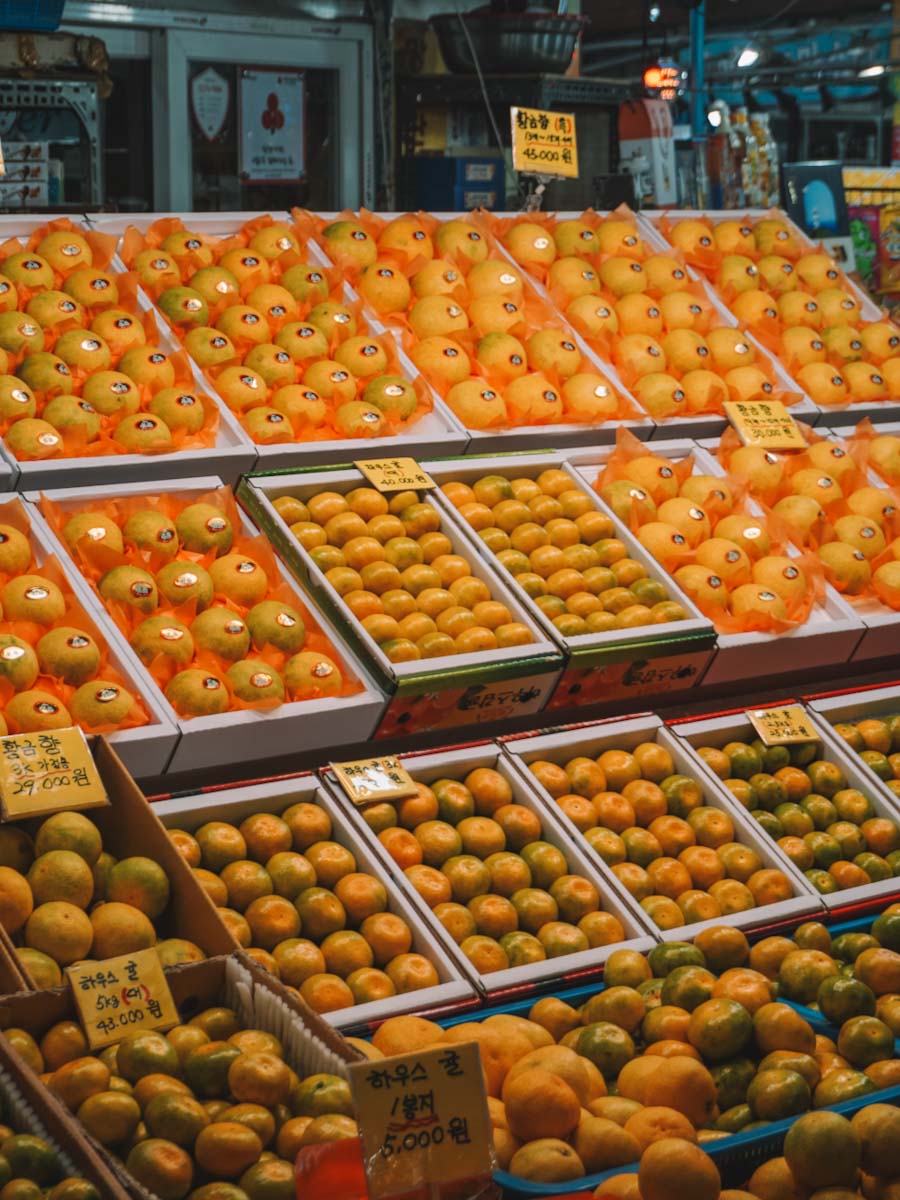
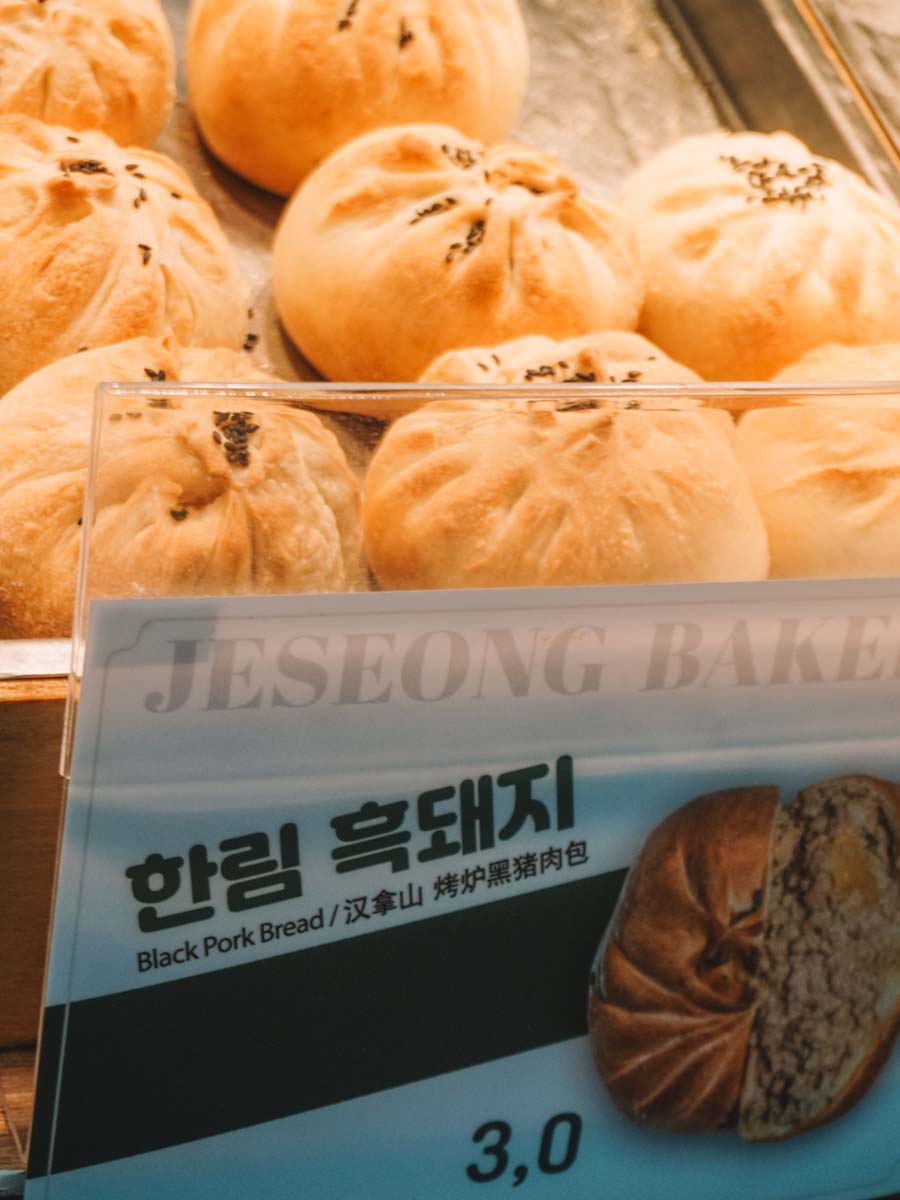
Day 5
Since your legs are probably a little sore from previous hikes, this last day will be more relaxed.
Waterfalls
In the south of Jeju, you can find a couple of waterfall. Very close to the city are the Jeongbang and Cheonjiyeon falls. Both of these are pretty to see and the perfect easy morning activity. Entrance fees for each of the waterfalls cost ₩2000.
You can check out both if you wish, but we preferred the Jeongbang waterfall. It is less crowded and the only waterfall in Korea that falls directly into the sea.
Jungmun Beach
About an hour away by bus from Seogwipo you’ll find a stunning beach with white sand, turquoise water and surrounded by lush forest and palm trees. Take either bus 510, 520 or 521 to get here. From the busstop, it is a 15 minute walk to the beach, but one that offers beautiful views.
Make sure to bring enough water and some snacks, and enjoy. Stay here until sunset on the beach or go to the The Cliff bar and restaurants. This is a bit more pricey, but has music and many comfy seats with great sunset views.

Disclaimer: This blog contains affiliate links. When you book through our links we can earn a small commission, but the price you pay stays the same, it’s a win win! We’d really appreciate the support.

